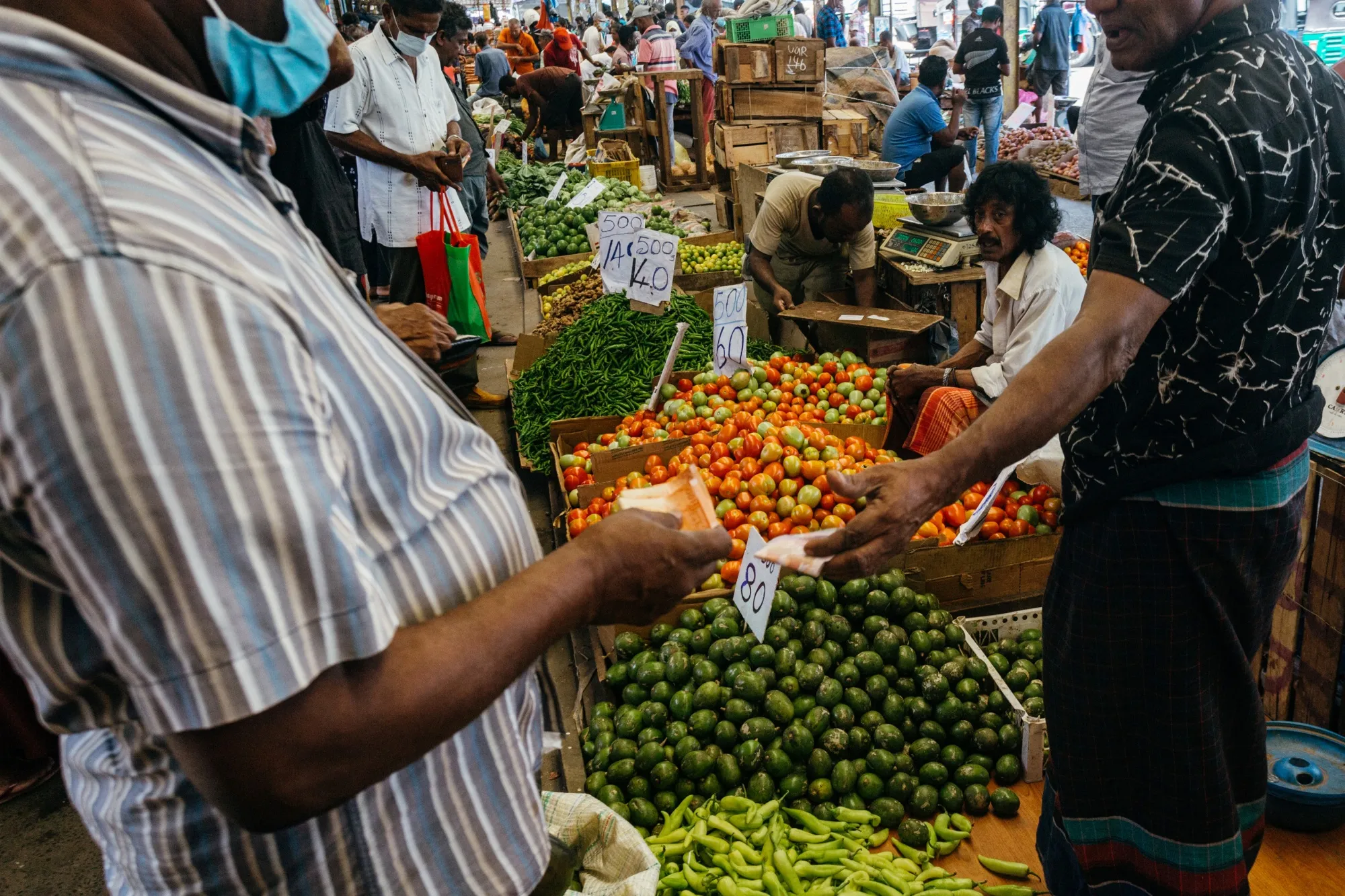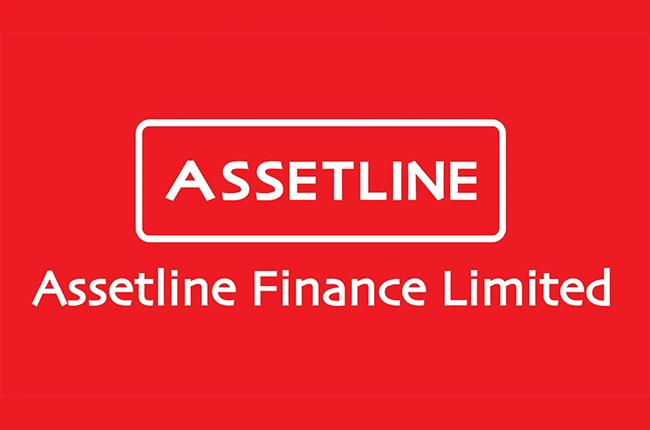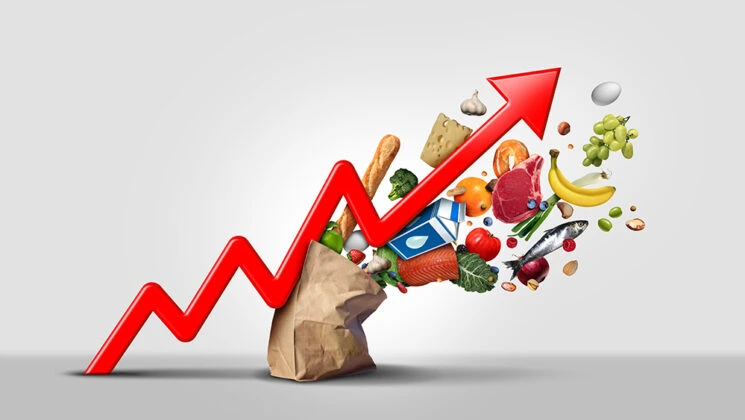Grocery Bill or Food prices are not random. They reflect a stack of policy choices and costs: VAT and para-tariffs at the border, a volatile rupee, fuel and electricity prices, weak logistics, market opacity, and post-harvest losses. When small frictions compound across the chain, the final shelf price jumps. Durable relief comes from cleaner taxes, cheaper and colder supply chains, transparent pricing, and targeted income support.
1) The journey from farm or port to plate
Every item in your basket passes through a repeatable chain. At the border, imported staples (wheat, milk powder, lentils, edible oil) face a landed cost made up of world price + freight + insurance, then duties and levies, then port and clearing fees. At the wholesale stage, traders add transport, storage, finance costs, and a margin. Retailers carry rent, refrigeration, spoilage (“shrinkage”), working capital, and compliance costs. Utilities run through it all: bakeries pay for electricity, trucks pay for fuel, cold rooms pay for both. A 2-3% increase at three or four points can easily produce a double-digit change at the till. That is the compounding effect consumers feel.
2) Taxes that quietly shape your basket
Two tax layers matter most.
VAT scope and rate. When more food items are brought into VAT, the tax is charged at each value-adding step and shows up in the shelf price unless offset elsewhere. Even if an item is exempt, embedded VAT on inputs (packaging, fuel, power, transport, refrigeration) can still raise costs indirectly.
Para-tariffs and cesses.
“Protective” or revenue-raising levies at the border on staples and inputs lift the base on which all later mark-ups apply.Because these charges sit early in the chain, they are multiplied by every subsequent margin. The effect is quiet but powerful.
3) The rupee and import dependence
Sri Lanka imports most wheat, milk powder, pulses, edible oil, animal feed, packaging materials, and all refined fuels. A weaker rupee pushes up the rupee value of every dollar invoice. FX volatility adds risk premia: suppliers quote higher to cover swings; importers hold pricier buffer stocks. Even domestically produced foods are affected because farms and factories use imported inputs; fertiliser, feed, machinery parts, fuel so the currency channel is broad, not narrow.
4) Fuel, power, and the “middle mile”
Fuel pricing formulas ripple through lorry runs from ports to wholesale markets to neighbourhood shops. Congestion, poor routing, and long queue times waste diesel and labour hours. Electricity tariffs hit milling, bakeries, cold storage, and supermarket refrigeration. When tariffs rise, operators either absorb a margin hit or pass costs on. Often they split the difference, but persistent energy inflation eventually reaches the consumer.
5) Market structure and grocery price opacity
Food moves through multiple hands. Each handler adds value and takes a margin, but information is uneven. When a shock hits say, a poor onion harvest or a freight spike prices can overshoot on the way up and come down slowly because no one knows when and how much others are cutting. Long chains magnify losses and slow pass-through. Shorter chains with better data move prices more smoothly.
6) Agriculture realities that surface at the till
Post-harvest loss is the silent tax on perishables. Without good crates, handling, and cold chain, 15-30% of fruit and vegetables can be damaged between farm and market. Every unit wasted must be paid for by the units that make it to shelves. Seasonality matters too: Maha and Yala cycles, rainfall variability, and pest events trigger swings that city consumers often experience as “sudden” price hikes. Input access particularly fertiliser and feed feeds directly into paddy, poultry, eggs, and dairy costs. A bad input season sets up a bad price season later.
7) Three everyday items, deconstructed
Bread. The price of bread is anchored to global wheat and freight, then the rupee. Add milling energy, bakery electricity, labour, and retail margins. Even if wheat prices calm, high electricity and a weak rupee can keep bread expensive.
Milk powder. Almost fully import-linked. World price + freight + rupee + border charges + packaging + distribution. When the rupee weakens, milk powder feels it fast. If VAT or a levy changes, the effect is immediate and visible.
Eggs and chicken. Feed costs dominate: maize and soy, often imported or priced off global markets. Add hatchery energy, farm biosecurity, transport fuel, and cold chain. Disease control costs can spike abruptly, causing supply dips and price jumps.
8) What actually lowers the bill
Clean up taxes and levies. Publish a simple, stable tariff schedule for core staples and inputs. If revenue is needed, rely on transparent VAT and offset with targeted cash transfers to vulnerable households rather than blanket controls that create shortages.
Make logistics cheaper and colder. Invest in pack-houses, pre-cooling, and cold rooms along major corridors. Standardise produce crates to cut damage. Enforce axle-load and turnaround standards so trucks are not idling at markets for hours. Time-window access to congested wholesale nodes reduces waste.
Force price transparency. Daily digital price boards for Dambulla, Pettah, and other key markets. Open APIs so media and consumer apps can display real-time wholesale and recommended retail prices. Require retailers to pass through tax cuts and significant input drops within a set window, barring justified exceptions.
Stabilise production. Guarantee predictable access to fertiliser and quality seed, support micro-irrigation, and scale crop insurance. Encourage contract farming and aggregation so farmers meet consistent specs and reduce middlemen layers.
Protect incomes, not prices. Index social protection to a basic food basket. Maintain school meals and maternal nutrition through shocks. Cash support preserves choice and avoids empty shelves.
9) How households can respond without illusions
No household can fix policy, but some strategies help:
- Shift brands and formats. Private labels and bulk packs often carry lower unit costs.
- Buy with the seasons. Sri Lankan vegetables are cheapest in glut weeks; preserve or batch-cook then.
- Freeze and portion. Minimise spoilage at home; wastage is the one lever fully in your control.
- Plan staples around energy costs. Batch baking or pressure cooking when tariffs are off-peak can matter at the margin.
- Co-op buying. Share bulk pulses, oil, and milk powder within extended family or neighbours.
These moves soften the blow, but they do not replace structural fixes. The system sets most of the price you pay.
10) What to watch in the months ahead
- Any VAT scope or rate changes touching the food basket or inputs.
- Fuel and electricity tariff decisions.
- Rupee path and timing of imports for wheat, milk powder, pulses, and fuel.
- Maha/Yala outcomes and rainfall anomalies.
- Freight rates if global shipping disruptions persist.
Bottom line
Your grocery bill is the sum of small, compounding frictions across taxes, currency, energy, logistics, and information. Caps and ad hoc waivers give momentary relief but seldom last. The durable play is cleaner taxes, colder supply chains, transparent pricing, and targeted income support for those who need it. Get those right, and the basket stops feeling like a moving target.











